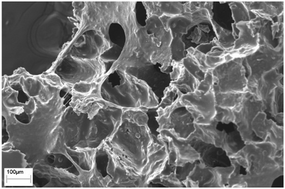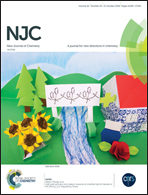Assembling of hydrophilic and cytocompatible three-dimensional scaffolds based on aminolyzed poly(l-lactide) single crystals†
Abstract
Poly(L-lactide) exhibits good biocompatibility and processability, but its surface lacks proper hydrophilicity for cell growth and proliferation, which hinders its use as a tissue engineering scaffold. Surface aminolysis has been reported to improve the surface hydrophilicity and cytocompatibility of polymers. However, the aminolysis of 2D substrates has been achieved on the surface to only low depths, and aminolysis of 3D scaffolds does not guarantee homogenous distribution of amine functionality on their surfaces. Thus, herein, we address these problems by developing 3D scaffolds based on pre-aminolyzed poly(L-lactide) single crystals. The scaffolds are fabricated using the simple compression molding salt leaching technique in the absence of heat and gluing materials. Mechanical and morphological studies show that the scaffolds are mechanically stable with well interconnected open-porous structures. Furthermore, the ninhydrin test confirms homogenous spatial distribution of amine groups. The biological behavior of the scaffolds is investigated by seeding them with fibroblast cells. The aminolyzed single crystals offer a better interface for fibroblasts to adhere, proliferate and migrate than the pristine crystals and hence result in a promising 3D porous structure for tissue engineering applications.



 Please wait while we load your content...
Please wait while we load your content...